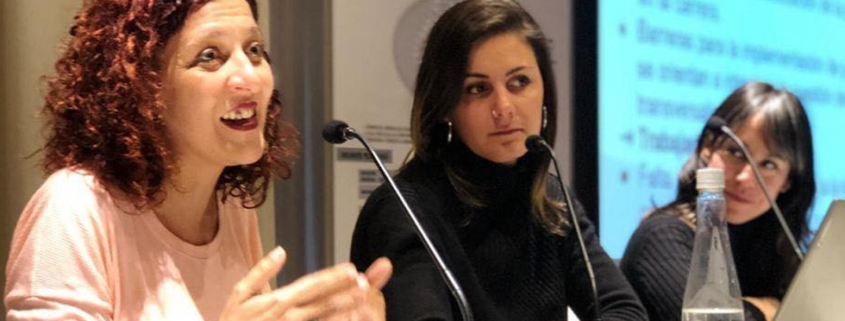We present the report on gender and advertising in Rosario
Last Thursday, June 27, we presented our report on gender and publicity at the Open University of Rosario, invited by members of the governing body and teacher of the advertising career.
“Below, we offer a google translate version of the original article in Spanish. This translation may not be accurate but serves as a general presentation of the article. For more accurate information, please switch to the Spanish version of the website. In addition, feel free to directly contact in English the person mentioned at the bottom of this article with regards to this topic”.
After years of research in communication and gender issues together with Comunicación para la Igualdad, we have arrived at results that highlight the unequal terrain faced by women and dissidents in the advertising field. For this reason, we understand the importance of disseminating this information in order to generate a positive impact in terms of gender equality within the advertising industry.
That is how on Thursday, June 27, the Open University of Rosario (UAI) opened its doors for the presentation of the report “Advertising sector and gender.” The invitation came from the Director of the Advertising Career, María Virginia Beduino and one of its most committed teachers on the subject, Mariángeles Camusso who, in addition, coordinates the Advertising Observatory on Sexism of the University.
Throughout the more than two hours of the presentation, conclusions were presented that enabled the debate and intervention of the participants. Together with the institution, the proposal was to generate a space for meeting and reflection on the future scope of student employment, to discuss the current trajectories of educational spaces, as well as to learn about the experiences of those who are already working.
During the dialogue different points of view and experiences of those who make up the advertising industry and its related sectors were shared: students, workers, teachers, representatives of advertising agencies and academia.
In the presentation, emphasis was placed on the need to know and address machismo and gender inequality within the advertising industry, since research on this subject is scarce, especially with an eye toward the interior of the country.

In these spaces, where invisibility prevails and, therefore, the reproduction of gender violence and stereotypes, sexism and gender gaps in the access of women to hierarchical positions and masculinized areas were known.
We identify that women are the majority (58%) among those who graduate from advertising careers. Then, when entering the advertising agencies, we noticed that among the people who work there there is a relative parity: 49.5% of female presence and 50.5% of males.
However, inequality is perceived in vertical and horizontal segregation, since men occupy the majority of the positions of hierarchy and the highest-paid and symbolically most relevant areas. Men constitute 83.5% of the property and managerial positions in advertising agencies, 68% of business chambers and 92% of those who direct creative areas. Even in areas such as Accounts where the female presence is 67%, in most cases it is directed by men (72.5%).
The area with the greatest female presence, both among its workers and in its directorates, is Administration or Finance, more orderly in terms of hours, although less valued in terms of salaries and possibilities of promotion.
In the educational field, there are no compulsory subjects on gender and in the agencies only 15% have carried out training on the subject.
Faced with these conclusions, we emphasize the importance of generating spaces for debate in educational institutions linked to the training of advertising professionals, since they allow us to raise concerns, denaturalize inequality and think about actions for the transformation of these spaces. The institutional openness of the UAI and the commitment of its teachers to address inequalities and gender violence in the advertising industry is a notable step towards its prevention and eradication from the zero point. We invite all the actors involved in the advertising industry to advance towards the eradication of gender-based violence.
Authors
Mila Francovich
Cecilia Bustos Moreschi
Contact
Cecilia Bustos Moreschi, cecilia.bustos.moreschi@fundeps.org











